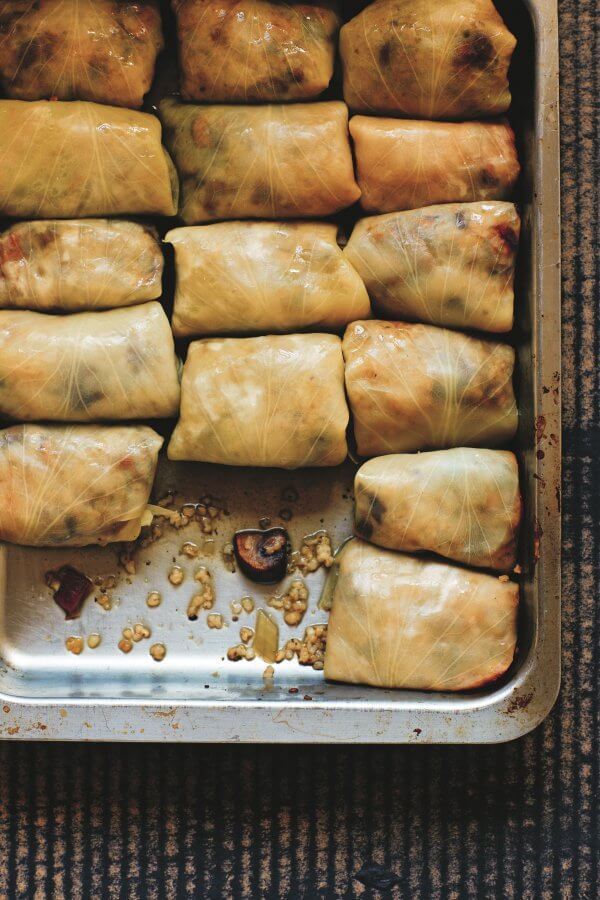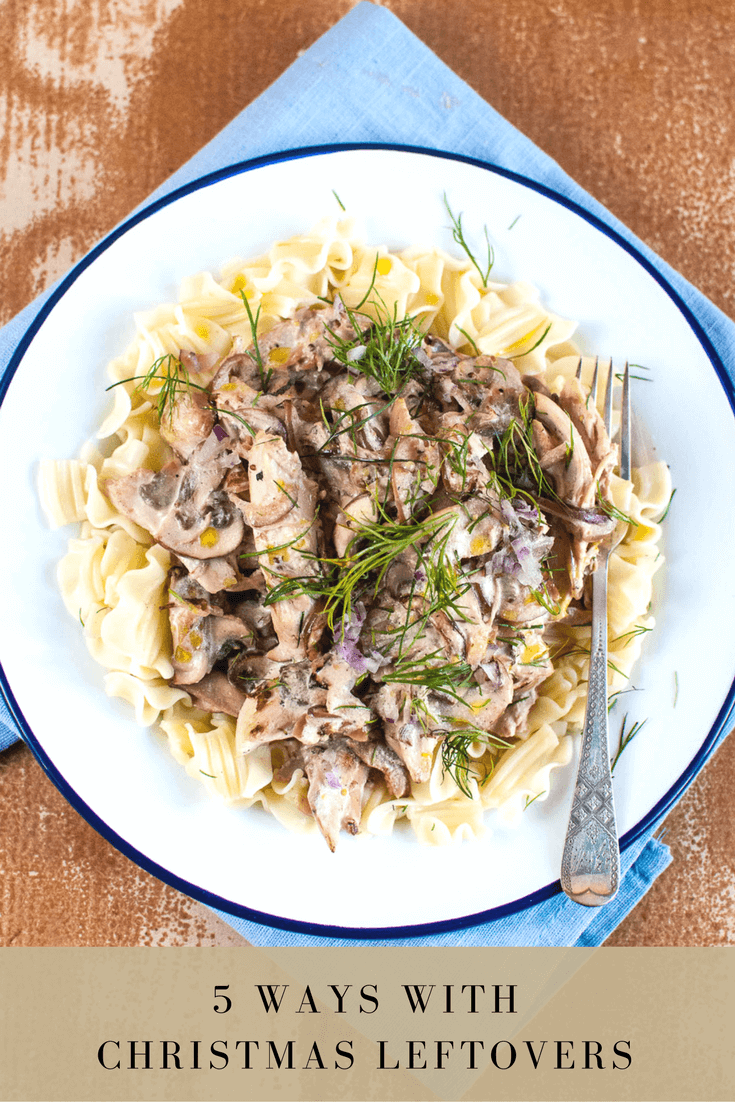A Polish Christmas Eve from Wild Honey and Rye
Christmas is almost here! Here in the UK, we are looking forward to beginning our family celebrations on Christmas Eve when we share a vigil meal, called Wigilia, according to the Polish tradition. This is a meal we all look forward to every year, in fact, it is really the highlight of our year. As a second-generation Pole who has grown up with dual-cultural heritage, both British and Polish, my respect for keeping this tradition is steadfast. I have grown up sensing how important Christmas Eve was for my parents and grandparents and indeed, the many generations of Poles before them. I now love explaining and sharing all the elements of the Christmas Eve meal with our children, which helps them to understand why the preservation of tradition and cultural heritage is so important.
Although there isn’t specifically a chapter on Christmas in my cookbook Wild Honey and Rye, the Christmas Eve meal is mentioned in a few of the recipes throughout. This is a meal full of symbolism and significance, with the preparation almost certainly beginning the day before; the meal traditionally being made up of twelve courses representing the twelve apostles. We lay hay underneath the tablecloth to remind us that Jesus was born in the manger and we always set a spare place for the unknown or unexpected guest. There are other theories in this fascinating article here, including the idea that we set out a place for those who are no longer with us. Very often over the years we have actually had unexpected guests knocking at the door and this has always added to our respect for keeping the custom of setting an extra place. Other customs include beginning the meal when the first star appears in the sky, which is said to represent the star of Bethlehem. Before the food is served, we share a blessed wafer called opłatek, with each person present exchanging greetings and good wishes with one another for the year ahead.

The twelve dishes themselves (all meatless) include ingredients from the forest, sea, field and orchard. Hence, there are plenty of dishes with forest mushrooms, such as mushroom soup or beetroot soup called barszcz czerwony or borscht, served with little mushroom-filled dumplings, lots of fish, including carp, cod and herrings from the Baltic sea. From the field, the dough for our pierogi or Polish dumplings is made with wheat flour and we drink a fruit compote made from apples from the orchard and other fruits. We end the meal, significantly fuller, with apple cake, Makowiec, which is a poppy seed roll, a traditional Polish cheesecake and Pierniczki, Polish Spiced Christmas Biscuits. At the end of the meal, we sing Christmas carols and exchange gifts.
If you know anybody Polish and have talked to them about our Christmas Eve meal, you’ll have almost certainly heard stories about live fish, specifically carp, swimming around in the bathtub. Thankfully, this is a practice that is much less common now and whilst fish is a big feature of the Christmas Eve meal, our family has always favoured cod and salmon from the fishmonger!
In Wild Honey and Rye, there is a simple recipe for Herrings in Cold-Pressed Linseed Oil, but you can also buy herrings in oil. Serving suggestions include herrings with green apple and honey, herrings with red onion and chives or herrings with sour cream – always served with a good Polish rye bread. If you don’t fancy the aforementioned carp, you could always try my Pan-Roasted Cod with Leeks and Cream, or my favourite fish recipe, the Baked Bream with Dill Butter Sauce.
This year’s Wigilia will be extra-special for me, owing to the fact that I have had lots of messages from people telling me that they are going to be attempting their first Polish Christmas guided by some of the recipes in Wild Honey and Rye. My Mama Alicja will be firmly at our pierogi-making helm, but my sister Basia is going to be following some of the recipes over with her family in America (we miss you!) and my English family friend Carla is bravely attempting twelve courses for her Polish in-laws. We’re with you, Carla. Many of you have said you’ll be taking a dish along as a contribution to a Wigilia meal you have been have been invited to. Polish home cooks are known for wanting to do absolutely everything themselves, but I am sure your host will appreciate anything that you bring. If you have Polish neighbours or friends, they will love it if you wish them a Happy Christmas Eve, or Wigilia, pronounced as Vigilia.
Genuinely, that some of you may be cooking from Wild Honey and Rye has made me feel so very grateful for the opportunity I have had to share some of our family recipes in the book. I am so thankful to my Mama not only for passing the recipes on, but also for celebrating this tradition in the way that she has with all of us over the years. It beats last-minute Christmas shopping, brings the whole family together and weaves some very special customs and traditions into Christmas. The extra place at the table will comfort us when thinking of loved ones gone. My father Longin and Grandma Babcia Tekla, both always looked forward to Wigilia with the family.
I always look forward to my Mama’s pierogi the most on Christmas Eve, when they are filled with sauerkraut or cabbage with mushrooms, or with potato and twaróg cheese. The master recipe and both fillings are in the book. There is also a recipe here on Great British Chefs and here on Lucy’s blog – the cream and mushroom filling would be perfect for a Polish Christmas Eve. Some people also like to serve meatless gołabki, or stuffed Cabbage Rolls, shown below with barley and mushrooms. The forest and field element is strong in these dishes!
If we make it to dessert, traditionally we have a makowiec, which is a yeasted poppy seed roll, or an apple cake, called Szarlotka or a baked cheesecake. I’ll actually be making this baked cheesecake with lemon and poppyseed. There is also a baked cheesecake with raisins in Wild Honey and Rye on page 182.
Incidentally, for Poles, the day after Christmas Eve is known as the Second day of Christmas, with duck or goose being popular. We stick to a very traditional British turkey on Christmas Day with all the trimmings.
And so, Christmas is here again and what a year it has been. Thank you to everyone who has supported my adventures with Wild Honey and Rye, and thank you also if you have bought it as a Christmas gift or are cooking from it this Christmas!
Wishing you all a very Happy Christmas, however you celebrate. I’m signing off to go and help in the kitchen.
A very special thank you also to Pavilion Books and to Yuki Sugiura for the images. Styling by Rebecca Woods and Alexander Breeze.
x











Excellent and comprehensive article that clearly explains all the essential points about screw compressors in an easy-to-understand way – thank you for the valuable information.
Such a beautiful tradition! The Polish Christmas Eve feast looks amazing!
Beautifully captures the essence of a Polish Christmas Eve! The description of the traditions, especially the breaking of the opłatek and the emphasis on family and community, is so heartwarming. The recipes you’ve shared, particularly the barszcz with uszka and pierogi, bring back wonderful memories of festive Polish gatherings. Your storytelling and attention to detail make it easy for readers to feel the warmth and joy of this special celebration. Thank you for sharing such a personal and cultural insight—it’s truly inspiring!
Thank you for sharing this useful article.
Hello.This article was extremely fascinating, especially since I was looking for thoughts on this issue last week.
https://zagroscompressor.com/
So nice article that cause me think about our nature.
Hello.This article was extremely fascinating, especially since I was looking for thoughts on this issue last week.
Excellent post. Keep posting such kind of info on your page. Im really impresseed by